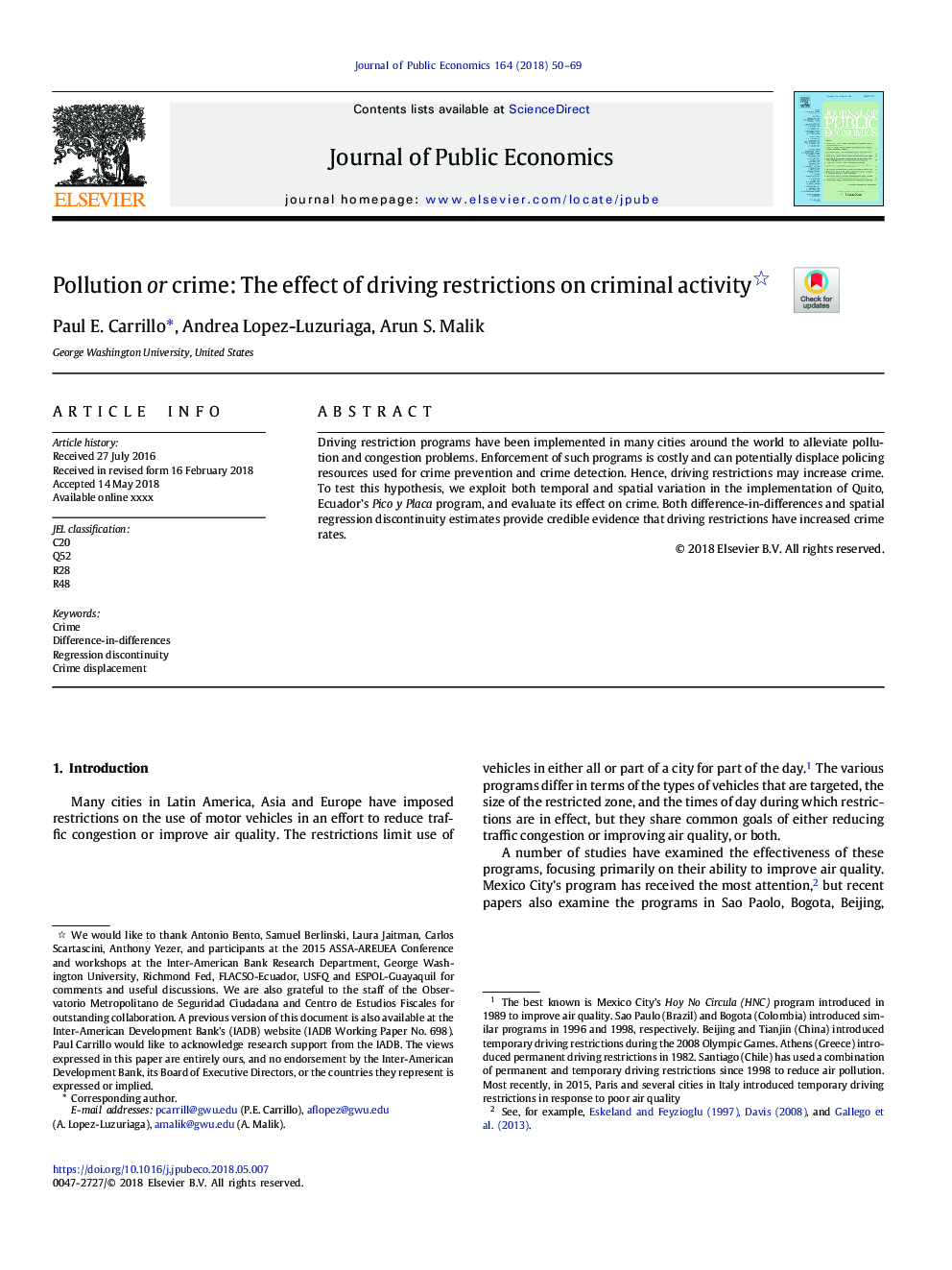| Article ID | Journal | Published Year | Pages | File Type |
|---|---|---|---|---|
| 7369320 | Journal of Public Economics | 2018 | 20 Pages |
Abstract
Driving restriction programs have been implemented in many cities around the world to alleviate pollution and congestion problems. Enforcement of such programs is costly and can potentially displace policing resources used for crime prevention and crime detection. Hence, driving restrictions may increase crime. To test this hypothesis, we exploit both temporal and spatial variation in the implementation of Quito, Ecuador's Pico y Placa program, and evaluate its effect on crime. Both difference-in-differences and spatial regression discontinuity estimates provide credible evidence that driving restrictions have increased crime rates.
Related Topics
Social Sciences and Humanities
Economics, Econometrics and Finance
Economics and Econometrics
Authors
Paul E. Carrillo, Andrea Lopez-Luzuriaga, Arun S. Malik,
